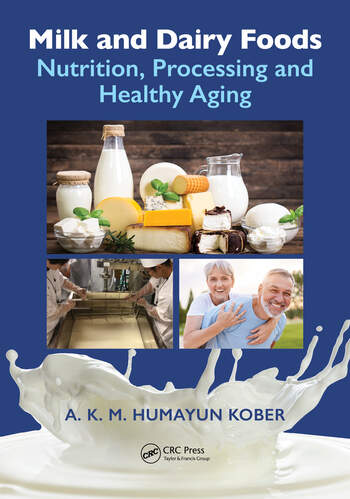Using cannabis terpenes in legal edibles and beverages
Terpenes on tap: Understanding the product development potential of terpenes in legal cannabis edibles and beverages.



Source: "What Are Cannabis Terpenes and What Do They Do?" (Leafly, February 12, 2014;
https://www.leafly.com/news/cannabis-101/terpenes-the-flavors-of-cannabis-aromatherapy)

Image courtesy of Getty Images.




As product developers become increasingly interested in crafting foods and beverages with Cannabis sativa, the focus is typically centered on the two primary active compounds the plant is best known for, cannabidiol (CBD) and the psychoactive compound tetrahydrocannabinol (THC). Research has shown that these cannabinoids can relieve symptoms of pain and insomnia, and might be particularly helpful for cancer patients. But the terpenes in cannabis also factor into formulations—and in more ways than one.
Flower Power
Cannabis and its edible food products have a unique smell and taste. Some people find it objectionable, while some enthusiasts find it enjoyable. These unique aromatic molecules are found in a class of chemical compounds called terpenes that are synthesized in the resin glands of cannabis flowers. Different cannabis strains have different types and levels of terpenes giving rise to their unique smell and taste.
Terpenes are lipophilic compounds that easily cross membranes and the blood-brain barrier. The class includes certain fat-soluble vitamins (vitamins A, E and K), carotenoids, and some coenzymes, such as coenzyme Q10 (ubiquinone). Terpenes are synthesized from various numbers of a five-carbon building block called an isoprene unit. The isoprene units are bonded together in a head-to-tail organization. Two isoprene units form a monoterpene, three form a sesquiterpene, six a triterpene, and so on.
There are over 100 different types of terpenes unique to the cannabis plant. While some emit a fruity, sweet, citrus aroma, others evoke lavender, and still others are earthy, woody or pungent. Terpenes are known to have a variety of beneficial physical and mental health effects.
Myrcene is the most-abundant terpene in cannabis, with one study indicating that it composes as much as 65 percent of the total terpene profile in some cannabis strains. Myrcene increases cell permeability and allows cannabinoids to be absorbed faster. Cannabis indica strains often contain 0.5 percent myrcene. They have been shown to have some sedative effects, in addition to assisting with inflammation and chronic pain.
Limonene is the second most-abundant terpene in cannabis, but not all strains necessarily have it. Limonene is responsible for increasing the levels of the neurotransmitter serotonin, which improves our mood.
Beta-caryophyllene—a sesquiterpene—is found in basil, oregano and black pepper, as well as cannabis. It has been shown to have antioxidant, anti-inflammatory and analgesic benefits. Results of a 2014 study conducted at the Chongqing Medical University in China, and published in the journal Pharmacology, supported the anti-inflammation capacity of beta-caryophyllene. Study results in mitigating brain inflammation were promising, and in having therapeutic potential in the treatment of Alzheimer’s disease.
Value Added
Terpenes offer possible medicinal value in that they modulate our body’s interaction with the therapeutic cannabinoids in edibles. Many cannabis analysis labs now also test terpene content, allowing developers and consumers alike to have a better idea of what a certain cannabis product contains.
Cannabis ingredient companies have begun manufacturing different terpene extracts and blends, and some cannabis edibles and beverages manufacturers have been adding terpenes to their products to round out flavor profiles. Some natural terpenes, like myrcene, have a characteristic flavor reminiscent of mangoes and can enhance fruit-based products like gummies and beverages.
Last year, mood33, LLC, Santa Monica, CA, launched line of sparkling cannabis-infused beverages with the product names Passion, Calm and Joy. “Our beverage formulations were created to mimic the entourage effect found in whole plant cannabis and improve bioavailability by combining CBD with THC in our Passion and Calm products at levels of 10 mg THC to 2.5 mg CBD and 10 mg THC to 5 mg CBD, respectively,” says Michael Christopher, co-founder and CEO. “Adding different combinations of synergistic terpenes has also helped create a targeted cannabis strain effect in the different products that also are supported by our other functional plant ingredients, specifically herb and tea extracts.”
The Passion product contains linalool, said to help elevate mood. Beta-caryophyllene, and alpha-pinene are added in small amounts for stress relief and mental clarity. “In the Calm product, a specific ratio of myrcene, beta-caryophyllene and limonene are added and help promote relaxation and a sense of tranquility,” says Christopher.
Chocolate has a strong and unmistakable flavor that lends itself well to a cannabis edible. Fruit flavors such as tangerine or raspberry can also be added to a cannabis chocolate to round out the flavor profile, and a formulator can add vanilla flavors and/or other masking agents to help diminish any strong back-note flavors, such as those from beta-caryophyllene.
For carbonated beverages, several flavors lend themselves well to cannabis-infused products. Ginger root, itself rich in healthful terpenes, provides strong aromatic and flavorful notes, while a lemon-lime or other citrus flavor can provide pleasant tartness. Cola provides a unique, spicy flavor that also marries well to cannabis.
Although hemp-derived cannabis extracts are oil-soluble, they can be transformed into water-soluble, clean-tasting powders to aid in the development of functional foods like carbonated beverages, gummies and teas. “We developed a proprietary coating technology that transforms cannabis oils into readily dispersible powders,” says Keith Woelfel, research & development and supply director, Stillwater Foods, Denver. “Our teas combine CBD and THC in a 20 to 1 ratio, or 10 mg to 0.5 mg.”
The Entourage
A growing body of evidence suggests whole, plant-based medicines can be more effective in the body than isolated, purified chemicals or drugs. With cannabis, there are more than 85 cannabinoids found to work in conjunction with THC to produce the therapeutic benefits reported by patients.
Some of the insights and data for such an “entourage effect” derive from scientific and clinical studies conducted since the mid-1980s, when the synthetic THC drug Marinol was approved by FDA for the treatment of both AIDS-associated anorexia and for nausea in cancer chemotherapy patients. Patients preferred to use the whole cannabis plant instead of the drug for relief of their symptoms.
The term “entourage effect” was coined by Shimon Ben-Shabat, Ph.D., and Raphael Mechoulam, Ph.D., in 1998. This phenomenon describes a synergistic effect when the dozens of phytochemicals present in the cannabis plant interact inside the human body to produce a stronger therapeutic effect than any one of the isolated compounds alone. It is also known that CBD modulates the effects of THC in the body.
However, there are several obstacles that would prevent the more holistic approach to drug therapy from being adopted by FDA. The potency of botanical extracts is inconsistent, as weather and growing conditions affect the plant’s chemical composition. Moreover, quality control and standardization are easier to accomplish with a purified extract versus a whole plant containing a variety of active ingredients.
Balancing the need for consistency and purity in ingredients with the advantages of taking advantage of the entourage effect represent some of the larger challenges facing cannabis product researchers and developers. For this reason, marketers of these products need to tread carefully in describing a product’s purported benefits.
This article was originally posted on www.cannabisproductsinsider.com
Looking for a reprint of this article?
From high-res PDFs to custom plaques, order your copy today!











